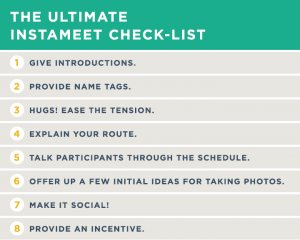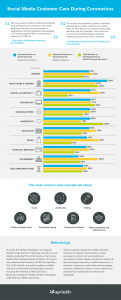
Choosing a software solution to help manage your strategic planning process is less about bells and whistles, and more about where your organization currently sits within the actual process. If you’ve only just begun to solidify your goals, full-featured strategy software may be overwhelming, and you might want to start with a simpler system. But if you’re further along in the process and already tracking metrics with a need for streamlined reporting and collaboration tools, more advanced software will be useful.
To help you find the strategy planning solution that matches your organization’s current needs, below are six software options, arranged from basic to sophisticated.
Microsoft Word
Microsoft Word is a great place to start strategy planning. Think of it as an actual piece of paper (with clearer handwriting): You can list your goals, outline some measures to track progress against those goals, and identify projects you’ll undertake to improve your measures.
Word is helpful for these initial planning stages, but including any type of formatting is challenging. For example, adding charts or tables to track quantitative measures over time is hard work. Using Word documents can also create version control issues if you want multiple people to contribute, and reporting directly from the application is almost impossible.
Microsoft Excel
Excel is a step beyond Word because it’s a lot easier to track strategic planning metrics and quantitative information. You can create charts fairly easily, and the tool has great features for creating formulas and custom calculations. You can even create a Balanced Scorecard in Excel and make use of the huge range of functionality in many other ways.
The catch with Excel is that it isn’t automated without a huge amount of work. The visualizations, calculations, and other functions require manual programming, and you must understand how to use the application to take full advantage of its tools. The more advanced uses are difficult to figure out and require expert-level ability. Similar to Word, you will also face version control issues if multiple people are collaborating on the same sheet—but more may be at risk if a complex formula is accidentally changed or deleted.
Microsoft PowerPoint
The main advantage of using PowerPoint for strategic planning over Word and Excel is the ease of formatting. You can drag and drop, mixing text and pictures, without hassle. PowerPoint’s layout is viewer-friendly and offers a great way to report on measures and progress.
The downsides are similar to Excel and Word. Any kind of design and formatting is a manual process—it’s up to you to make things look nice, and that requires knowledge of the application’s ins and outs. It also has the same version control issues mentioned previously; plus, PowerPoint is designed for single-person use, not collaboration. Other people can leave comments on slides, but those comments are hard to see and respond to.
Microsoft Project
Microsoft Project is excellent for detailed project and task management. It’s great for day-to-day planning and facilitates collaboration across teams to unite efforts in a single direction. It’s so useful that many organizations run Project in conjunction with more advanced strategic planning software solutions.
Project isn’t as helpful for high-level planning. It doesn’t have functionality to connect tasks and projects to goals and the overarching strategy. This makes it difficult for organizations to see alignment between what’s happening on the ground every day and the vision for the future. And again, inevitably version control issues crop up when multiple contributors get involved.
Google Suite
Moving away from Microsoft applications and into the Google Suite eliminates those persistent version control issues. Google’s products exist “in the cloud” where many users can share and edit a single document simultaneously. Collaboration functionality becomes more important as your strategic planning process matures.
The primary drawback of the Google Suite is that it allows users to make unauthorized changes. Google’s administrative controls are fairly basic and don’t offer many options to tailor access rights. If a user accidentally deletes everything in a Google Doc, there’s a risk you won’t be able to recover the information and a lot of hard work could be lost. Also, whether it’s Docs, Sheets, or Slides, there’s no automation within the Suite to help you create polished formats and visualizations—your knowledge of the tools determines how professional your reports look.
The main difference between the Google Suite and software specifically built for strategic planning is you won’t have more robust features around notifications, automation tools, advanced reporting, and collaboration. For example, you won’t be able to compile report pages into a briefing book with a few clicks. If your organization’s strategic planning process is full steam ahead and you need these types of features, it’s time to invest in strategy software.
If you are a devotee of Office 365, you will likely run into all of the same issues as Google Suite, so just be aware of them and weigh the costs with the benefits.
ClearPoint’s Strategic Planning Software
ClearPoint is built to handle the strategic planning process, so you get the best of all the previous tools with even more features. It offers a robust, layered feature set with built-in automation, making it ideal for organizations who have outgrown Microsoft and Google applications. With ClearPoint, you have the ability to:
- Perform automated calculations of quantitative measures and add qualitative analyses to provide additional context.
- Customize everything—create whatever you want, however you’d like it to look, with whatever language you want to use. The system provides a standard structure, but you have the freedom to build upon and change it.
- Tailor anything you need to share from your strategic plan for different audiences. You can generate a customized PDF, host information on an external website, email pages directly, and more.
- Consolidate all strategy activities within a single system. You don’t have to bounce around different tools to accomplish strategic planning and execution—it’s all in one. And team members across your organization can log in to see key goals and how their departments align with the organization’s overarching strategy, offering motivation and validation for their work.
- Track what everyone’s doing and who’s made changes. You have nuanced levels of permission and version control, including automated notifications if specific edits are made and an audit log with an “undo” function.
Beyond the features of its strategic planning software, ClearPoint offers the best support team in the industry—these are passionate, responsive “fixers” who are on call to provide help whenever clients need it. ClearPoint is also known for building a strong customer network for collaboration, benchmarking, and learning and growth. The ClearPoint Community hosts regular events where different organizations present on their strategic planning processes; shares insightful data from customers in an ever-expanding “measure library”; and publishes best practices learned from the variety of industries ClearPoint serves.
To summarize, if your company is ready to take its strategic planning to the highest level, it should look for strategy software with a robust feature set and additional resources outside the technology to support your efforts. If you’re still in the early stages of refining goals and measures, the other software options in this article will help you get organized and on the right track.
Business & Finance Articles on Business 2 Community
(68)
Report Post





